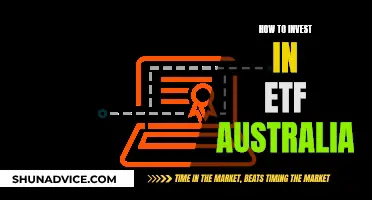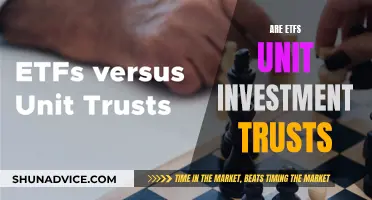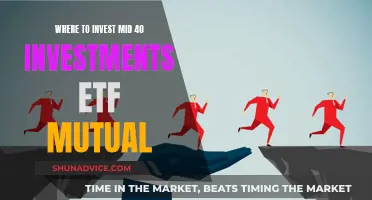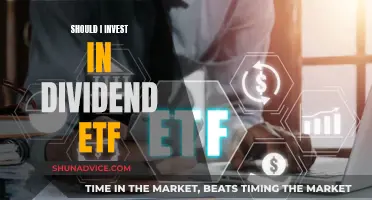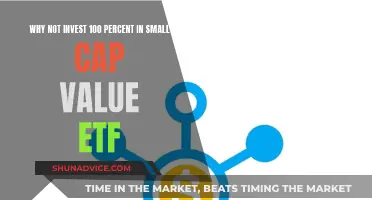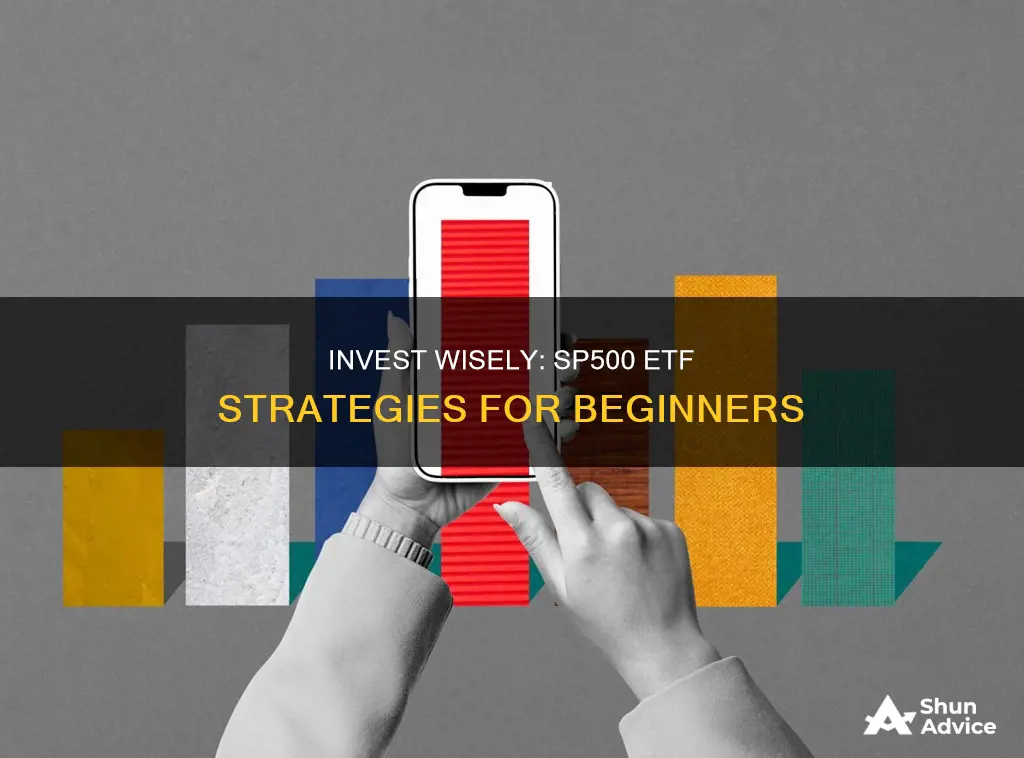
The S&P 500 is a stock market index composed of 500 large U.S. companies, including Microsoft, Amazon, and Apple. It is often considered a proxy for the overall health of the U.S. stock market. While you cannot directly invest in the S&P 500 index itself, you can gain exposure to it by investing in an S&P 500 index fund or exchange-traded fund (ETF).
Index funds and ETFs are passively managed investments that aim to replicate the performance of the underlying index. They offer instant diversification and are generally considered less risky than purchasing individual stocks directly. When the S&P 500 performs well, your investment will too, and vice versa.
To invest in an S&P 500 ETF, you'll need to open a brokerage account, such as a taxable brokerage account, a 401(k), or an IRA. You can then purchase shares of the ETF on the open market, just like you would with individual stocks. It's important to consider the expense ratio, which represents the annual fee charged by the fund manager.
Some popular S&P 500 ETFs include:
- SPY: State Street SPDR S&P 500 ETF
- VOO: Vanguard S&P 500 ETF
- IVV: iShares' Core S&P 500 ETF
- SPLG: SPDR Portfolio S&P 500 ETF
| Characteristics | Values |
|---|---|
| What is the S&P 500? | The S&P 500 Index is a stock market index composed of 500 large public U.S. companies. It is considered a bellwether for the American stock market. |
| How to invest in the S&P 500? | Individuals can invest in the S&P 500 through index funds or ETFs that track the index. Investors can choose a taxable brokerage account, a 401(k), or an IRA. |
| Benefits of investing in the S&P 500 | Exposure to the world's most dynamic companies, consistent long-term returns, no intricate analysis required, can serve as a core holding. |
| Drawbacks of investing in the S&P 500 | The index is dominated by large-cap companies, has risks inherent in equity investing, and only includes U.S. companies. |
| How much does it cost to invest in the S&P 500? | Costs depend on the type of fund and broker. There may be expense ratios, sales loads, and share prices to consider. |
| Popular S&P 500 ETFs | SPY, VOO, IVV, SPLG, SPUU, SPXL, SPDN, SPXS |

Index funds vs ETFs
Index funds and ETFs (exchange-traded funds) are similar in many ways. Both are passively managed, aiming to replicate the performance of a specific market index, such as the S&P 500, and both offer instant diversification by holding a wide range of stocks. They are also similar in that they pool investors' money to create large, professionally managed portfolios.
However, there are some key differences between the two. ETFs can be bought and sold throughout the trading day, whereas index funds can only be bought and sold at the end of the day. ETFs are also more tax-efficient than index funds because they generally use an "in-kind" creation and redemption process, which minimises capital gains distributions. ETFs are also more accessible, as they typically do not have a minimum investment requirement, whereas index funds often do.
In terms of fees, ETFs and index funds are largely similar, with both offering low expense ratios. However, ETFs may incur trading commissions, while index funds do not.
Overall, both index funds and ETFs are good options for long-term investors seeking broad exposure to the stock market. ETFs may be more suitable for active investors due to their flexibility and tax efficiency, while index funds could be preferable for long-term investors looking to buy and hold.
A Beginner's Guide to Investing in Vanguard ETFs
You may want to see also

Brokerage accounts
When choosing a brokerage platform, it is important to consider cost-efficiency, the variety of ETF offerings, and the availability of advanced research tools. Cost-efficiency is crucial, as low expense ratios and commission-free trading can significantly enhance overall returns. Investors should look for platforms that offer a wide range of commission-free ETFs and have minimal fees associated with trading and account maintenance.
In addition, the platform should provide access to a broad spectrum of ETFs, including those that cover different asset classes, sectors, and geographic regions. This diversity allows investors to build a well-rounded portfolio tailored to their specific investment goals and risk tolerance.
Additionally, advanced research tools and resources are invaluable for ETF investors. Features such as comprehensive ETF screeners, detailed fund analysis, and real-time market data can help investors make informed decisions and optimize their investment strategies.
- Fidelity: Offers over 2,500 ETFs, extensive research capabilities, and an ETF Portfolio Builder.
- Interactive Brokers: Provides a powerhouse of investment and research tools, including screeners with scores of factors and global market access.
- Charles Schwab: Easy-to-use ETF screener with roughly 100 screening characteristics and commission-free trading.
- Vanguard: Offers low-cost ETFs and is ideal for buy-and-hold investors seeking a list of diversified Vanguard ETFs as core holdings.
- ETRADE: Offers competitive slate of ETFs, risk-based and customizable pre-built portfolios, and industry-leading mobile apps.
ETFs: A Beginner's Guide to Exchange-Traded Funds
You may want to see also

Dollar-cost averaging
- Understand Dollar-Cost Averaging: Dollar-cost averaging is a strategy where you invest a fixed amount of money in the S&P 500 at regular intervals (e.g., monthly or quarterly). This approach helps to reduce the risk of investing a large sum of money just before a market downturn. It also takes the emotion out of investing by having you purchase a small amount of an asset regularly.
- Choose an S&P 500 Index Fund or ETF: You can invest in the S&P 500 through index funds or exchange-traded funds (ETFs). Compare different funds based on their expense ratios (the annual fee charged by the fund manager) and sales load (a sales commission charged by some mutual funds). S&P 500 index funds typically have low expense ratios, often below 0.10% annually.
- Open an Investment Account: You will need a brokerage account to buy investments. Choose a broker that offers a wide range of ETFs and mutual funds without trading fees. If you are investing for retirement, consider using a 401(k) or IRA account, which come with added tax benefits.
- Determine Your Investment Amount: Figure out how much you can afford to invest regularly. You can start with a small amount and increase it over time. Set up your account to transfer this amount from your bank account at regular intervals.
- Buy the S&P 500 Index Fund or ETF: Once you have selected your S&P 500 index fund or ETF and determined your investment amount, go to your broker's website and set up the trade. Input the fund's ticker symbol and the number of shares you want to buy, based on your budget. Consider setting up an automatic investment plan with your broker to buy the fund at regular intervals.
- Stick to Your Investment Plan: Dollar-cost averaging works best when you consistently invest, regardless of market conditions. Remember that falling markets are an opportunity to buy more shares at lower prices. If you have the discipline to continue investing during market downturns, you can potentially score excellent deals and maximize your long-term gains.
- Monitor Your Investments: While dollar-cost averaging is a long-term strategy, it is important to periodically review your investments. Evaluate the performance of your S&P 500 fund and make adjustments if necessary. Diversifying your portfolio by investing in other assets or sectors can also help manage risk.
Mongolia ETF: A Guide to Investing in the Country's Future
You may want to see also

Expense ratios
When investing in the S&P 500, it's important to consider the expense ratio of the fund. The expense ratio is the annual cost paid to the fund manager by investors, and it's usually a percentage of the investor's assets. For example, an investor with $100 in a fund with a 0.04% expense ratio will pay an annual fee of $0.04.
S&P 500 index funds tend to have slightly higher fees than ETFs due to higher operating expenses. ETFs are traded like stocks and have a share price, while mutual funds can only be bought at the day's closing price, based on the fund's net asset value (NAV).
ETFs that follow the S&P 500 index tend to have some of the lowest expense ratios on the market. Many charge less than 0.10% annually, meaning you'll only pay around $10 per year for every $10,000 invested. Some of the lowest-fee S&P 500 ETFs include:
- IShares Core S&P 500 ETF (IVV)
- Vanguard S&P 500 ETF (VOO)
- SPDR Portfolio S&P 500 ETF (SPLG)
- SPDR S&P 500 ETF (SPY)
The expense ratio of a fund is an important consideration as it can significantly impact long-term returns. For example, an investor who puts $10,000 in a fund that returns 10% every year will pay $336 in fees to a fund with a 0.5% expense ratio. The same investment in a fund with a 2.5% expense ratio would result in fees of $1,682.
Therefore, when choosing an S&P 500 fund, it's essential to consider the expense ratio to ensure you're getting the best value for your investment.
Best ETFs to Invest in This Year
You may want to see also

Liquidity
ETFs are generally highly liquid and subject to intraday price fluctuations. They trade like stocks, and investors can buy and sell them throughout the day. In contrast, index funds can only be bought and sold at the end of each trading day, at the day's closing price.
Additionally, the S&P 500 index itself is considered a bellwether for the American stock market. It contains a diverse range of about 500 large U.S. companies, representing approximately 80% of the total U.S. stock market's value. This diversity and representation make the S&P 500 an attractive investment option.
Millennials: The ETF Generation?
You may want to see also
Frequently asked questions
The S&P 500 Index is a stock market index composed of 500 large public U.S. companies. It is often considered a proxy for the overall health of the U.S. stock market.
You can't directly invest in the S&P 500 index itself. However, you can invest in an S&P 500 index fund or exchange-traded fund (ETF) that tracks the index.
Investing in an S&P 500 index fund or ETF can instantly diversify your portfolio and is generally considered less risky than purchasing individual stocks directly. The S&P 500 includes some of the world's most dynamic companies, and it has consistently performed over the long term.
When choosing an S&P 500 ETF, consider factors such as the expense ratio, liquidity, tracking error, and inception date. Some popular S&P 500 ETFs include SPY, VOO, IVV, and SPLG.


